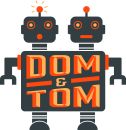One of Dom & Tom’s most recent hires is seasoned Product Owner and Scrum Master, Alex Christison, who comes to us not only with a wealth of knowledge in product management but a love for the Agile Movement. In software development, many times clients do not fully understand what Agile is and in particular what the terms Scrum, Scrum Master and Product Owner mean. However, when it comes to building mobile apps and websites, some of the first decisions made involve how to manage the process, the team and the workflow. Understanding exactly what Agile is and the 12 principles behind the Agile Manifesto will greatly increase communication between the client and the team. We want to help clarify exactly what the Agile Movement is and what that means for us, for our clients and most importantly, for the product.
What is Agile?
Agile is commonly referred to as a methodology. However, Christison, along with several other software development professionals, like to refer to it as a “movement.” It is a movement that embraces alternatives to traditional project management styles such as the Waterfall or Kanban methodologies. While we certainly use other methodologies when building a product, we tend to lean toward Agile as it has been known to come in under-budget and on time more often than other methods. The Agile approach promotes teamwork, transparency and heavy client involvement at every stage of development. This allows the team to establish trust with the client and also helps the team understand the vision for the product. Simultaneous activity across the teams (e.g. design, mobile, marketing) allows iterations of a product to be delivered often so that clients can provide constant feedback, requirements can be adjusted and costs can be minimized. With Agile, internal team members work on each iteration of the product in what is commonly known as “sprint.” Within the sprint, team members are given the autonomy to set their own standards and expectations of what work will be done. The idea is that you hire great talent and keep open lines of communication so that you can essentially “get out of their way and let them do their job.”
What is Scrum?
Scrum is an Agile framework for managing a process that values self-organization and the predictable nature of teams. With Scrum, you have three distinct roles: the Product Owner, the Scrum Master and the Team. Each role has its own set of responsibilities and deliverables that must be completed within a sprint, which can range from 1-4 weeks, with 2 weeks being most common. After each sprint, the product is evaluated and any revisions are discussed to prepare for the next sprint. Scrum relies heavily on self-managed teams, flexibility, evaluation and the delivery of versions of a product in short periods of time. Because Scrum is extremely feedback-driven the implementation of a daily standup is beneficial, where each team member briefly explains what they are working on and what they may be blocked on. “Scrum is by far the most popular of the Agile frameworks because it involves communication, discipline, trust and the ability to adapt to changes easily,” Christison says.
What is a Product Owner?
The Product Owner’s role is to represent the clients and oversee the entire development process for the product. A lot of times the Product Owner is the middleman between the clients and the team. A Product Owner should have superior communication skills, a solid vision and authority in order to resolve any potential conflicts. A Product Owner is responsible for creating the product backlog, which is essentially a master list of priorities that the team must accomplish in order to deliver the product. A Product Owner motivates the team to work at their own pace with the goal of quickly completing tasks from the top of the product backlog, all while assuring the team that additional work will not be added during the active sprint. “Establishing trust, being a good listener and having a level head is what makes a great Product Owner. Clients sometimes do not know what is best for their product and a Product Owner must be able to guide them through any difficulties,” Christison says. Ultimately, the Product Owner must find a balance between neutrality and an educated opinion to keep the successful deployment of the product top-of-mind.
What is a Scrum Master?
A Scrum Master should always be a separate role from the Product Owner. A Scrum Master is responsible for keeping the team focused and on target with their goals. A Scrum Master is the facilitator of the development process and teams schedule. They set up the daily standup, help maintain the burn rate, set up sprint retrospectives and protect the team from any interruptions during a sprint. A Scrum Master must be organized, assertive, communicative and a great problem solver. That person must work with the Product Owner to understand the product backlog and how to efficiently make progress each sprint. Most importantly, they remove any blockers the team may have in order to work toward achieving all of a sprints goals.
We believe the results of using the Agile method and more specifically, the Scrum framework, will be increased productivity, better communication, shorter development times, reduced costs and ultimately the delivery of a superior product for clients. Agile is good for us because it manages team burnout and increases employee satisfaction. Agile is also good for clients because it is easy to understand and provides organization and process with transparency and communication. “I am excited that Dom & Tom has brought me on as a Product Owner because I truly believe that the further implementation of the Agile Movement will not only create amazing products but will allow for clients and teams to collaborate with knowledge and respect,” says Christison.
To learn more about the Agile Movement and other interesting topics, visit Dom & Tom's website today.




